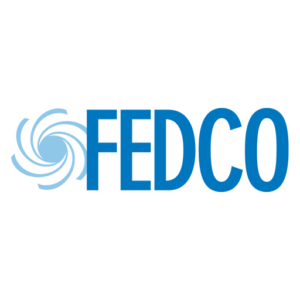Past Events
The Future of High Recovery
In recent years, improvements to membranes and hydraulic equipment have made high-recovery RO a practical and cost-effective option for improving the process of desalting water. A growing number of companies are using this new generation of hydraulic equipment to produce new system configurations capable of maximising recovered water volumes while minimising pretreatment and energy requirements.
After an introduction to various high recovery technologies and systems, our expert panel will explore both the financial and environmental impacts of high-recovery desalination, and the lessons the seawater and ZLD sectors could learn from the brackish water space. Speakers will evaluate savings in both OPEX and CAPEX, the implications for facility footprint and performance, as well as water savings and waste reduction.
Key questions addressed by our leading panel experts:
• What has changed to make high pressure RO a practical possibility in seawater applications?
• What can be learnt from the brackish water desalination industry?
• How does energy use weigh up against the benefits of high recovery RO?
• What are the implications of new technologies for the feasibility of zero- and minimal liquid discharge?
• How can high salinity brine streams be managed?
Main Strand
Digital Desalination: embracing digital tools for design, commissioning and optimization
Despite the fact that seawater desalination may be the most complex water treatment technology, the industry has been surprisingly slow to embrace the new and innovative digital monitoring and control solutions now available. However, the recent growth of seawater RO – particularly as the Middle East transitions from thermal to membrane technologies – has led to an increased interest in performance optimization tools within mega-plants, to ensure competitive water tariffs.
A growing number of plants are employing machine learning, artificial intelligence and digital technologies in order to monitor plant performance and respond to changing feedwater quality. These technologies have already started to demonstrate their ability to optimize energy and chemical consumption to reduce OPEX, while new design software and digital twinning are facilitating commissioning and improving plant safety. In this meeting, the GWI Network will explore the different digital opportunities in seawater desalination, bringing together those working on plant design, commissioning and security, plant performance optimization, and predictive maintenance.
You can now review the entire panel recordings from this FEDCO sponsored online meeting. Click here to watch the panel recordings.
Main Strand
Related Strands
The New Future of Water: How NEOM can change the water industry
It is time to change the game for the water sector. We know that our current approach is no longer sustainable with the Earth’s limited resources and will lead to shortages, and conflict, in the future.
We have an opportunity to turn this negative into a positive through the introduction of a new model that builds a sustainable future for all. We can do this by minimizing water costs, eradicating waste and preventing pollution. This means recycling 100% of wastewater, a net-zero footprint, renewable energy and sea-water mining. For water must stay where it belongs – in the wild.
That is the scale of NEOM’s ambition. And in Saudi Arabia on September 27th, we will launch our vision to change the future of water – during an online symposium hosted by the GWI Network.
Just imagine if the old rules and legacy systems no longer applied. That will be the discussion taking place during the event. We will consider a post-carbon future and ask questions such as:
- How would you design water systems, if energy was an unlimited resource?
- What if we could find all the materials needed for modern life washing up on our shores?
- What if there really was no waste and everything we did contributed to a better world?
The symposium will bring together the leading thinkers involved in water, energy and mineral resources from around the world to discuss new thinking and solutions. Register your interest to be the first to find out more about this meeting.
Main Strand
Related Strands
Water Tech Idol 2020
What are the big ideas that have the potential to change the face of desalination and water reuse? Picking winners at an early stage is extremely difficult but Tech Idol has a remarkable success rate, highlighting the potential of breakthrough technologies such as NanoH2O, Voltea and Gradiant, well before the rest of the market had twigged to their advantages.
On November 19th we brought together five of the hottest ideas in desalination and water reuse, and pitched them against each other in front of our lethal judging panel to help uncover the game changer.
Water Technology Idol 2020 - Winner
The Barrel SWRO, presented by Jean-Baptiste Thubert, Technical Director, SIDEM-VEOLIA
A plug-and-play approach to seawater RO, which uses a large-diameter carbon steel vessel that is factory assembled and may contain over 200 RO membrane elements, each of which is equipped with a digital sensor to enable operator monitoring. The arrangement allows for outdoor operation and a reduction in plant footprint.
Water Technology Idol 2020 - Distinction
Desal Software-as-a-Service, presented by Mike Dixon, CEO, Synauta
A secure, easy-to-deploy machine learning software package that yields desal plant energy savings. Using algorithms tailored to best predict efficiencies for a given plant, Synauta collaborates with operators to collect the correct data, and deliver a process equipment and instrumentation analysis. Plant flows are manipulated to ensure performance goals are met at a minimum energy input. Following an assessment phase, operators control inputs, and software is integrated with the plant SCADA system.
Water Technology Idol 2020 - People's Choice
Voted for by attendees during the live session.
The Barrel SWRO, presented by Jean-Baptiste Thubert, Technical Director, SIDEM-VEOLIA
A plug-and-play approach to seawater RO, which uses a large-diameter carbon steel vessel that is factory assembled and may contain over 200 RO membrane elements, each of which is equipped with a digital sensor to enable operator monitoring. The arrangement allows for outdoor operation and a reduction in plant footprint.
Watch the pitch video.
Technology Presentations
Main Strand
Copyright © Global Water Intelligence 2020. All rights reserved.




